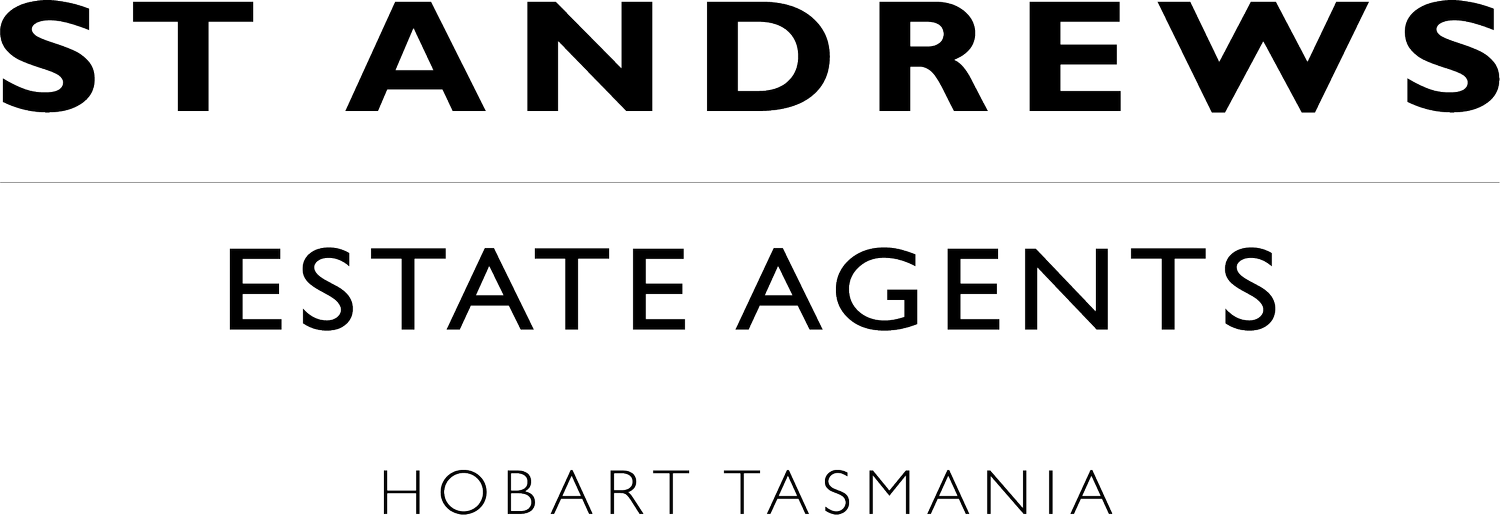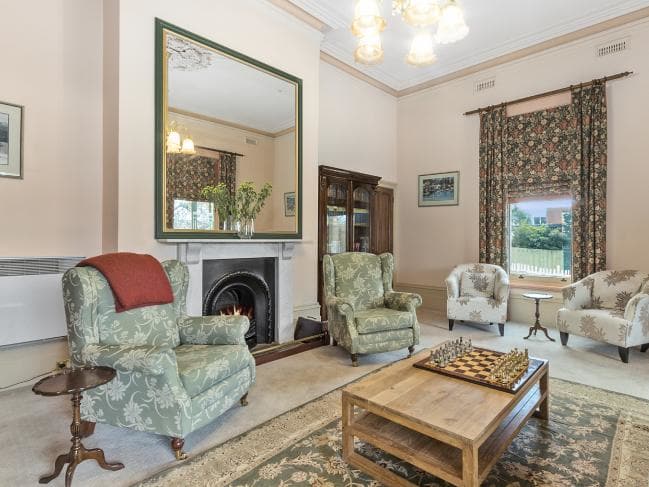Henry Hunter designed Victorian-era mansion to market at $3.2m+
THE opportunity to snap up a grand, regal, Henry Hunter-designed showstopper is a rarity in the Tasmanian market.
Currently, the 1885-built Gattonside in Battery Point is the only home by the lauded architect that is on the market.
In the past few years Airlie, Maylands and Fairmont/Stoney Steps are among the Hunter homes that have changed hands.
St Andrews Estate Agents director Steve Yannarakis said since the listing launched he has had a good, steady level of inquiry.
Steve said most of this interest had been from interstate, including people who will be flying in to Hobart to view the property.
“While the eventual buyer will likely be someone with a commercial bent, it is not out of the question that someone will fall in love with the beauty of this beautiful, grand home and make it their family residence,” he said.
“Gattonside has been a successful accommodation provider for decades.
“A lot of people see it as a good space to be in right now, with tourism in Tasmania on the up and the state booming.”
Steve described Gattonside as one of Hunter’s “most enduring and lauded designs”.
He said Hunter was Hobart’s
pre-eminent colonial architect, responsible for an incredible list of significant buildings such as St David’s Cathedral, St Mary’s Cathedral and Hobart Town Hall, plus numerous private residences, including Gattonside, which is National Trust-listed.
The property features formal gardens, excellent off-street parking for up to 10 vehicles, and an external freestanding office building.
Entry to this magnificent and imposing home is through the deep front veranda.
Stepping past a stained-glass surrounded door, the floor plan offers a foyer, sumptuous formal lounge, office and kitchen. Over its two generous levels there are eight large ensuite bedrooms.
From the high ceilings with ornate plasterwork to the fireplaces,
multi-paned windows and original timber flooring, fabulous period features abound.
Over the years the home has been beautifully restored and is superbly presented.
It also comes fully furnished.
The quality of this incredible building is matched by its blue-ribbon location.
The owner will be able to walk to most of Hobart’s leading attractions such as Salamanca Place and Sullivans Cove, restaurants, bars and galleries, as well as festivals such as the Taste, Dark Mofo and the Wooden Boat Festival.
The sale of Gattonside Heritage Accommodation represents an exceptional opportunity to acquire a premium hospitality asset within Hobart’s most sought-after suburb, which also boasts the highest median price.
There is the flexibility of choice should the owner wish to convert it back to a truly grand residence or, potentially, apartments.
No.53 Sandy Bay Road is on the market, listed with St Andrews Estate Agents; it will be sold by expressions of interest over $3.2 million.
CoreLogic figures show Battery Point has the highest median price in Tasmania at $1.25 million across 12 sales in the 12 months through to the end of April. In that time the median grew by 32.1 per cent.
The suburb’s unit market was also strong, with 33 sales and 12 per cent growth.
There are currently just four Battery Point homes listed for sale, priced between $1.1 million-plus and “Expression of interest over $3.2 million”.
Battery Point: ‘In Sydney you’d get 10 times the price’
Plonk this Hobart home on Sydney Harbour, and the ticket price would easily be an eye-watering $40 million, or more, according to Steve Yannarakis of St Andrews Real Estate.
The grand 1890s residence on a vast 1174sqm waterfront block at 68 Napolean St in Battery Point, is on the market with a price guide of about $4.7 million.
“Put it in Sydney and you’d be able to get more than 10 times that price,” he said of the coveted home with a 20m river frontage.
With its charming Victorian facade, extraordinary water views and unique positioning, it’s no surprise that the five-bedroom property was realestate.com.au ’s most clicked on listing in Tasmania and the ninth most popular in the country this week.
“It’s just such a rare opportunity, listings like this don’t come up very often. There are just 29 waterfront homes in Battery Point and only six have a private jetty like this one,” he said.
Even rarer is the addition of a slipway and a boat shed.
“It’s got the trifecta and maybe only one other home in Hobart has that,” he added.
Since the current owners bought the home in the 1990s, they have undertaken extensive renovations and additions to the historic Hobart property.
“No expense was spared at the time, it’s got everything,” Mr Yannarakis said.
Over three levels there are five large bedrooms, including three with ensuites, four bathrooms in total, multiple formal and casual living areas, a library, wine cellar and a contemporary dine in kitchen complete with an enviable water backdrop to ponder while doing the dishes.
The wow factor lies in the huge atrium style main lounge room which has enormous floor-to-ceiling picture windows to take in the panoramic views of the Derwent River, Short Beach, Errol Flynn Reserve and The Royal Yacht Club of Tasmania
Over the vast leafy grounds there are terraced gardens with established trees, manicured lawns plus private side and rear courtyards.
Mr Yannarakis said while the residence has a big double lock up garage, it is also walking distance from several amenities including Hampden Road Village, the Salamanca market place, Sandy Bay shops, Short Beach and The University of Tasmania campus.
Tasmania is booming: confidence and optimism have become infectious
Over the last 3 years, we have noticed a fundamental change in Tasmania. Confidence and optimism have become infectious. This was evident again with the front page of The Weekend Australian carrying an important article on how solid our local economy has become. Tourism, food, agriculture and education are booming based on long term underpinnings.
Over the last 3 years, we have noticed a fundamental change in Tasmania. Confidence and optimism have become infectious. This was evident again with the front page of The Weekend Australian carrying an important article on how solid our local economy has become. Tourism, food, agriculture and education are booming based on long term underpinnings.
The property market in Hobart is very buoyant. With the strong impetus from State and Local Government to make Hobart a vibrant city, apartments are in high demand. And high quality design and visual amenity are top of mind.
Hobart is in fine fettle!
Island economy on the rocks no more
Tasmanian Walking Company head Zane Denmen and Daisy Lamont, his partner and co-manager at the Bay of Fires Lodge in Tasmania’s northeast. Picture: Peter Mathew
The Australian 12:00AM May 20, 2017 MATTHEW DENHOLM Tasmania correspondent, Hobart
Long the butt of jokes and dismissed as the mendicant state, Tasmania is having the last laugh.
The tourism, food and agriculture sectors are booming, propelling it ahead of the nation in several key economic indicators.
The Tasmanian Chamber of Commerce and Industry believes the former “basket case” has turned the corner, with the island enjoying higher business confidence and stronger capital city property price growth than the nation as a whole, and the second lowest unemployment rate of all states.
Tasmania’s cultivation of close ties with China and President Xi Jinping is also paying off. The Weekend Australian has learnt of Chinese investors buying into at least six tourism businesses in recent months and eyeing investments in wine, to add to existing agricultural assets in fruit and dairy. The shift appears cultural as well as economic, with business leaders stunned by a flood of entrepreneurial start-ups in tourism, agriculture, food and alcohol – wine, beer, whisky, gin, cider and vodka.
Even once-depressed traditional industries are resurgent.
Catamaran builder Incat is expanding to build ferries for Sydney Harbour and major European clients, while green shoots are emerging in the forest industry.
Walking tourism is booming, with new lodge- or hut-based walks planned, including on the Three Capes, Overland, Walls of Jerusalem and South Coast tracks.
Fewer young Tasmanians need to leave the state to find work, while some are returning.
Zane Denmen left Tasmania for Queensland when his lighthouse keeper father was made redundant in the mid-1990s, but a career as a guide and chef has led the 38-year-old back to the region of his childhood.
“I’ve come full circle,” said Mr Denmen, Tasmanian Walking Group’s consultant chef and co-manager at Bay of Fires Lodge, the latter role shared with partner Daisy Lamont.
“When we left in the 90s, Tasmania was in a grey zone; nothing much was going on, so it’s really good to return now with Tassie really booming.”
Michael Bailey, chief executive of TCCI, said Tasmania had “turned a corner, there is no doubt about that”.
“That appears to be driven by some exciting parts of our economy,” Mr Bailey said.
“Tourism is still very strong, as is agriculture, based on the quality of its food. There are clear shining lights in the Tasmania economy and I think that is sustainable. I do believe we are on the cusp of a couple of decades of very exciting times in Tasmania.”
The TCCI this month reported strong business confidence in all regions, not just the traditionally more prosperous south, and — remarkably — a higher level of confidence in the state economy than in the national economy.
National Australia Bank’s Business Survey confirmed the trend, showing Tasmania had the highest rate of business confidence of any state, and well above the country as a whole.
Business leaders and economists credit the lower Australian dollar for assisting strong growth in overseas tourism to Tasmania — increasing at 11 per cent a year and led by China, Taiwan and Hong Kong — and for helping the state’s exporters.
They also cite flow-on interest from Mr Xi’s 2014 visit to Tasmania, the economic and cultural fillip from Hobart’s Museum of Old and New Art and associated festivals, and a return to state majority government.
The island retains stubborn structural problems — poor levels of educational attainment and workforce participation and a slower-growing and faster-ageing population than the rest of the country — while gross state product still trails other economies.
However, Tasmania is now ranked fourth for economic performance by CommSec, ahead of Western Australia, South Australia, Queensland and the Northern Territory.
CommSec rates the strength of Tasmania’s job market as second, behind the Northern Territory. CoreLogic this month reported Hobart as having the strongest growth in property prices of any capital city (5.1 per cent for the quarter).
While critics like to dismiss Tasmania as “one big national park”, its extensive reserves are helping to generate serious income. The state last year attracted 1.24 million visitors, who spent $2.14 billion in the local economy, while holiday makers increased 17 per cent last year.
Major new hotels — including a Marriott International and two controversial sky-scrapers proposed by Singapore’s Fragrance Group — are planned. Chinese investors have recently purchased a swag of accommodation in Hobart, and several in regional towns, including the Fox and Hounds in Port Arthur and the Beachside Retreat, near Stanley.
Premier Will Hodgman said the turnaround was assisted by stronger budget management, allowing targeted investment. “We have backed our competitive strengths big time, in particular investing more into tourism marketing and infrastructure,” Mr Hodgman said. “We have (also) cut red and green tape.”
Tasmanian economist Saul Eslake urged further reform, such as asset sales, reducing payroll tax, and improving matriculation rates. “It’s unclear how sustainable the upturn is,” Mr Eslake said.







